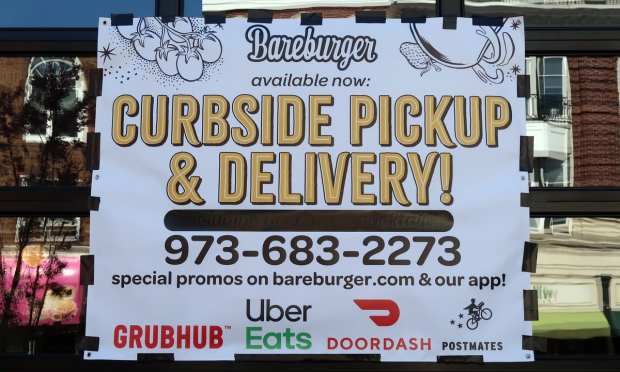ResTech’s Rising Prominence In Writing The Future Of The Industry

Point-of-sale restaurant technology startup Toast recently held a secondary share offering that reportedly valued the company at $8 billion as restaurants and ResTech rebound from COVID-19 lockdowns’ depths.
CNBC this week cited unnamed sources as saying that Toast held the sale to let current and former employees cash out up to 25 percent of their vested shares at $75 apiece. The network reported that the sale involved as many as 800,000 shares, while the $75 share price handily beat the $45.45 that SharesPost saw when Toast raised $400 million in February just prior to the pandemic. SharesPost said that gave Toast a $4.9 billion valuation as of February.
“In order to support our employees and former employees as they navigate the impact of COVID-19, we did complete a secondary offering recently,” a Toast spokesman told CNBC, although he didn’t confirm the $8 billion valuation.
Still, the company’s reported valuation gain came just months after Toast cut its staff by roughly half, laying off 1,300 workers as COVID-19 closures slammed the restaurant business.
However, the firm has since partly recovered as restaurants of all sizes and descriptions embrace such pivots as takeout, digitization and contactless payments, apparently creating a spike in demand for Toast’s services.
The latest valuation news also comes just a few days after Toast launched a new suite of tools to help restaurants boost contactless transactions.
“Restaurateurs need technology that helps them quickly adapt — whether it’s pivoting business models, adhering to new regulations, or answering changing guest expectations for safety and convenience,” Steve Fredette, president and co-founder of Toast, said in a statement last Wednesday (Nov. 18).
He said new contactless POS tools called “Toast Go 2” and “Toast Order & Pay” would address the new dining reality today, and could also meet “the diner experience of the future.”
Jax Bell, general manager at Hawaiian Bros. Island Grill in Kansas City, Mo., said Toast Go 2 allows the eatery to “[take] orders curbside, with guests not even getting out of their cars. The order is sent straight to the kitchen, we take payment on the spot, and it’s all completely contactless.”
These tools hit the market just as Toast’s new valuation has been announced and underline how very much the landscape for dining “out” has changed in the last eight months — and how very much ResTech firms like Toast are no longer just a nice add-on for restaurateurs trying to fully serve their customers.
With restaurant dining rooms shut down, socially distanced and largely still shunned by consumers hoping to avoid infection, having the technology in place to take orders online, take payments contactlessly and deliver to a customer’s trunk seamlessly is for many dining establishments the difference between surviving the pandemic and not.
And Toast, though notably successful in 2020, is not unique among players in its segment. Players such as DoorDash, Uber Eats and Postmates have all benefited from the restaurant industry’s fast changeover to takeout, curbside pickup and delivery.
For example, DoorDash posted third-quarter revenue three times higher than expected. Rival Uber Eats saw a 190 percent revenue surge.
Serving A Shifted Consumer Base
That surge in ResTech relevance comes as consumers are shifting their dining habits and preferences around the COVID-19 virus, developing an increasingly sharp preference for interactions that are as contactless and touch-free as humanly possible.
According to the 2020 iteration of the PYMNTS/Visa How We Will Pay Study, 77 percent of consumers reported that they think the addition of contactless and touch-free payments and dining locations would constitute a safety upgrade that would encourage their patronage in the future.
And according to the PYMNTS/Visa How We Shop survey, 19 percent of consumer have shifted from dining in-house at restaurants to ordering food online since the pandemic began.
The same report indicates that consumers do certainly miss eating in restaurants, and that an increasing share indicated they will back doing so when the pandemic has passed. But “passed” is the operative word, and consumers’ definition of all-clear for activities like dining out is the widespread availability of a vaccine and a significant decline in case counts.
Neither condition has been met as of yet, nor do either look like they will be happening before we ring in 2021.
Restaurants that want to stay connected to consumers need the technology that will make those connections possible over digital. And those that want to find ways to thrive rather than merely survive after the pandemic are notably leveraging those new digital connection in ways they never have before.
Dining On Subscriptions And Digital Restaurants 2.0
CEO Andrew Robbins of ResTech firm Paytronix recently told PYMNTS that restaurateurs are increasingly looking for novel ways to tap their digital connections to consumers, which is why Paytronix recently launched subscription-service functionality.
“Right now what restaurants want is to offer something more to their customers — something that’s going to help really solidify the relationship and provide value for the money people are spending,” he said. “The goal is [to] tie them tighter to the customer, especially as we’re talking about COVID increases and things like the second wave. And there’s a way to do this with value.”
For example, certainty is valued in uncertain times, which is why many restaurants are offering subscription products. Knowing that one’s pizza will show up every Friday night or a coffee will be ready just the way customers want it is a comforting value of certainty.
Robbins said that’s why Paytronix has seen restaurants rushing to get subscription offers out the door and ready for the holidays — both for customers looking for themselves and for a gift-giving opportunity.
And while subscriptions aren’t the right move for every location — Starbucks, he noted, would go quickly bankrupt offering a $9-a-month coffee subscription — the idea of using the digital connection as a point from which to build additional value for consumers is increasingly becoming necessary for every restaurant. Because, though customers might go back to dining in-house one day, they will likely hold onto the digital preference they’ve spent the past several months developing.
Which means ResTech might find itself even busier during a real recovery period than it’s already been during the pandemic.
